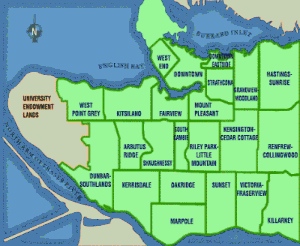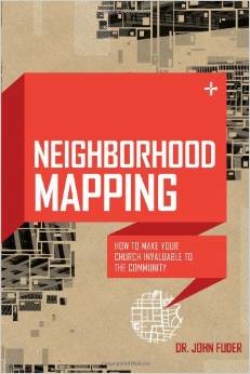My wife Margaret and I will be visiting our new granddaughter Olivia (and her parents!) in Toronto throughout August, so I will not send out any Church for Vancouver weekly updates for a month. The next update will arrive Wednesday, September 3, God willing.
 At the beginning of the year, I made a rather foolhardy commitment to start a weekly series on Vancouver neighbourhoods. Time and energy have not allowed me to follow through. However, I still want to look at our neighbourhoods in some detail. No promises – and in particular no promises about a weekly articles – but I do plan to at least launch the series this fall.
At the beginning of the year, I made a rather foolhardy commitment to start a weekly series on Vancouver neighbourhoods. Time and energy have not allowed me to follow through. However, I still want to look at our neighbourhoods in some detail. No promises – and in particular no promises about a weekly articles – but I do plan to at least launch the series this fall.The term neighbourhood has many meanings and uses. Neighbourhood can be used to refer to many things: the small group of houses in the immediate vicinity of one’s residence, or an area surrounding a local institution patronized by residents, such as a church, school or social agency. Regardless, the concept of neighbourhood
includes both geographic (place-oriented) and social (people-oriented) components.
Taking both of these components and infusing them with Jesus’ Great Commandment to love God and to love our neighbour, the neighbourhood becomes the primary place where we practice these dual loves.
The neighbourhood is the place we learn and live our identity as Christ-followers who love God and love our neighbours. Simply put: The Great Commandment assumes we know our neighbours. Love is not something that can be offered intermittently, from afar, or once a week. To live the Great Commandment in the neighbourhood, amongst our neighbours, requires a new priority, proximity and permanence.
Walking the streets of the city
Margaret and I have just decided to walk every street in the city – not in any particular order, but we are marking each walk on a map to make sure we don’t miss anything. Not only are the walks very enjoyable (and good exercise), but there is simply no other way to get a feel for the great variety of housing, landscaping and atmosphere.
So far we’ve spent time in Shaughnessy, the West End, Collingwood and the Downtown Eastside. All very different, all beautiful in their own way, all interesting, all needing the gospel. For the most part we’re just walking, but we pray a bit, and sometimes we will even take part in what’s going on – joining a march for housing in the DTES, for example (as in the picture above).
Don Moore, national church ambassador for World Vision Canada, asked Where does your church fit in the neighbourhood? recently. I’m going to keep his thoughts in mind as we continue to walk Vancouver neighbourhoods:
Recently I met a researcher who’s studying how churches’ contributions financially benefit cities and especially neighbourhoods. It’s really amazing – this man wants to quantify the tangible benefits that churches offer to their communities – from tree planting to suicide prevention. . . .
Some may say that this is reductive – churches are about more than saving money, of course – but for our very secular neighbours who crunch numbers, this could be a first step in valuing what a church can offer.
 A great book on my desk these days is the recently released Neighbourhood Mapping: How to Make Your Church Invaluable to Your Community by John Fuder.
A great book on my desk these days is the recently released Neighbourhood Mapping: How to Make Your Church Invaluable to Your Community by John Fuder.
In some ways, Dr. Fuder’s book suggests doing church from the “’outside in.’ Instead of thinking which programs your church has to offer to your community, think first of what is going on in your community and how your church can meet those needs. . . .
So as the sunny days take you out to wander the streets, be on the lookout for potential ways in which you can serve your neighbourhood. Take a few minutes to reflect on the tangible value that your church offers where you are in your community.



You are talking my language! Love the emphasis on neighbourhood.